Complete Solutions to Problem of chapter FRICTION AND CIRCULAR MOTION of Class 11 book with complete answers and questions
| Class 11 | PHYSICS |
| Chapter | FRICTION AND CIRCULAR MOTION |
| GRB PUBLICATION | Problem |
| Number Of Questions | 47 |
| Academic Year | 2023-24 |
A man of mass `40kg` is at rest between the walls as shown in the If `'●'` between the man and the walls is `0.8` find the normal reactions exerted by the walls on the man .
01:47View SolutionA `2kg` block is in contact with a vertical wall having coefficient of friction `0.5` between the surfaces. A horizontal force of `40N` is applied on the block at right angles to the wall. Another force of `15N` is applied on the plane of the wall and at right angles to `40N` force. Find the acclecration of the block .
02:52View SolutionA block of mass `4kg` is placed on a rough horizontal plane A time dependent horizontal force `F =kt` acts on the block `(k =2N//s)`. Find the frictional force between the block and the plane at `t =2` seconds and `t =5` seconds `(mu =0.2)` .
02:12View SolutionA block on table shown in is just on the edge of slipping Find the coefficient of static friction between the blocks and table
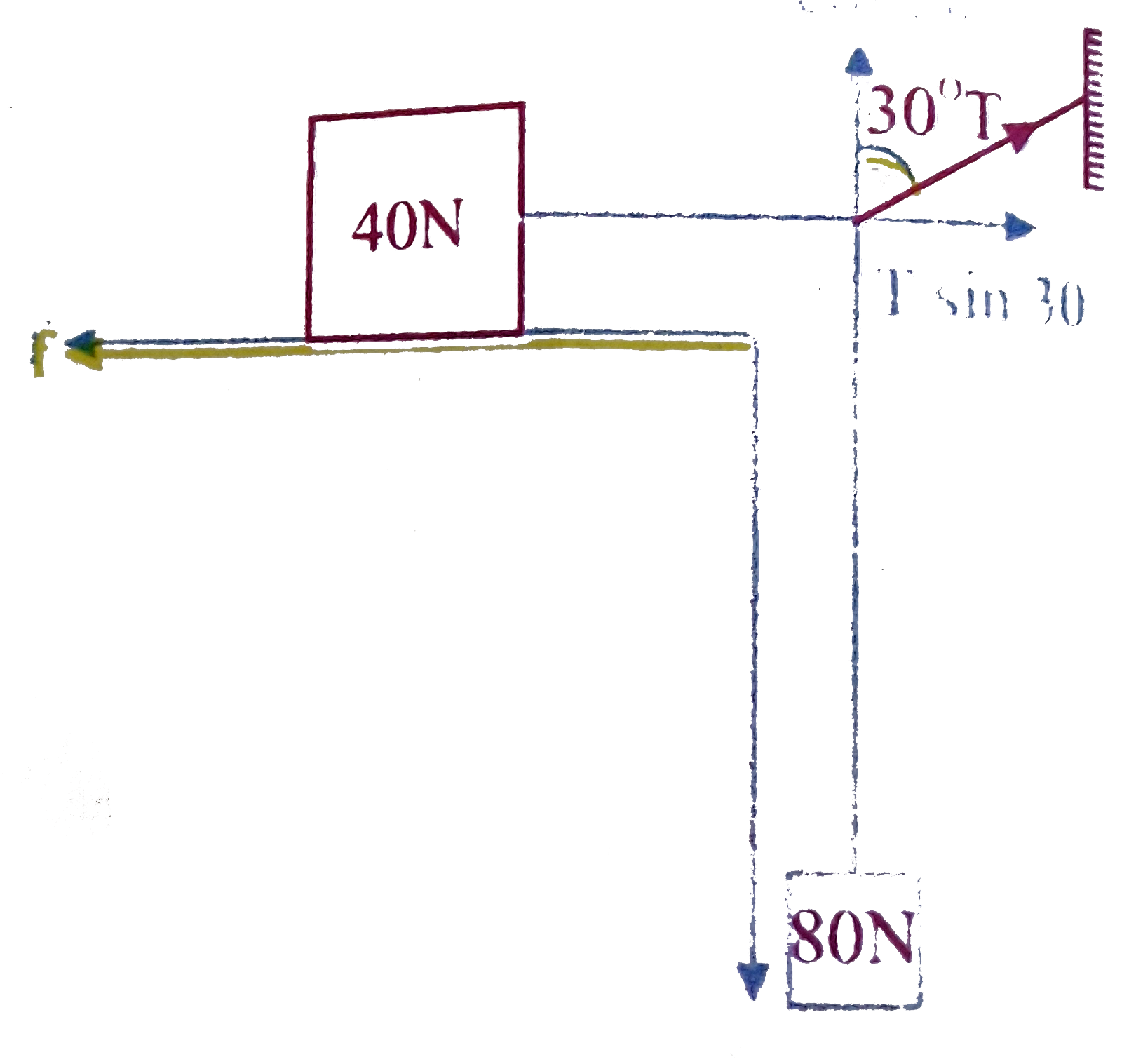 .02:26View Solution
.02:26View SolutionWhen a car of mass `1000kg` is moving with a veocity of `20ms^(-1)` on a rough horizontal road its engine is switched off. How far does the car move before it comes to rest if the coefficient of kintic friction between the road and tyres of the car is `0.75` ? .
02:03View SolutionA horizontal conveyor belt moves with a constant velocity `V.A` small block is projected with a velocity of `6m//s` on it in a direction opposite to the direction of motion of the belt The block comes to rest relative to the belt in a time `4s. mu =0.3, g =10 .m//s^(2)` Find `V` .
02:59View SolutionThe rear side of a truck is open and a box of 40 kg mass is placed 5 m from the open end The coefficient of friction between the box and the surface below it is 0.15 On a straight road the truck starts from rest and accelerates with `2 m//s^(2)` At what distance from the starting point does the box fall off the truck ? Ignore the size of the box .
03:50View SolutionA block of mass `10kg` is pushed by a force `F` on a horizontal rough plane is moving with acceleration `5ms^(-2)` When force is doubled its acceleration becomes `18ms^(-2)` Find the coefficient of friction between the block and rough horizontal plane `(g =10ms^(-2))` .
02:40View SolutionA block of mass `'m'` is placed on a rough surface with a vertical cross section of `y =(x^(3))/(6)`. If the coefficient of friction is `0.5`, the maximum height above the ground at which the block can be placed without slipping is .
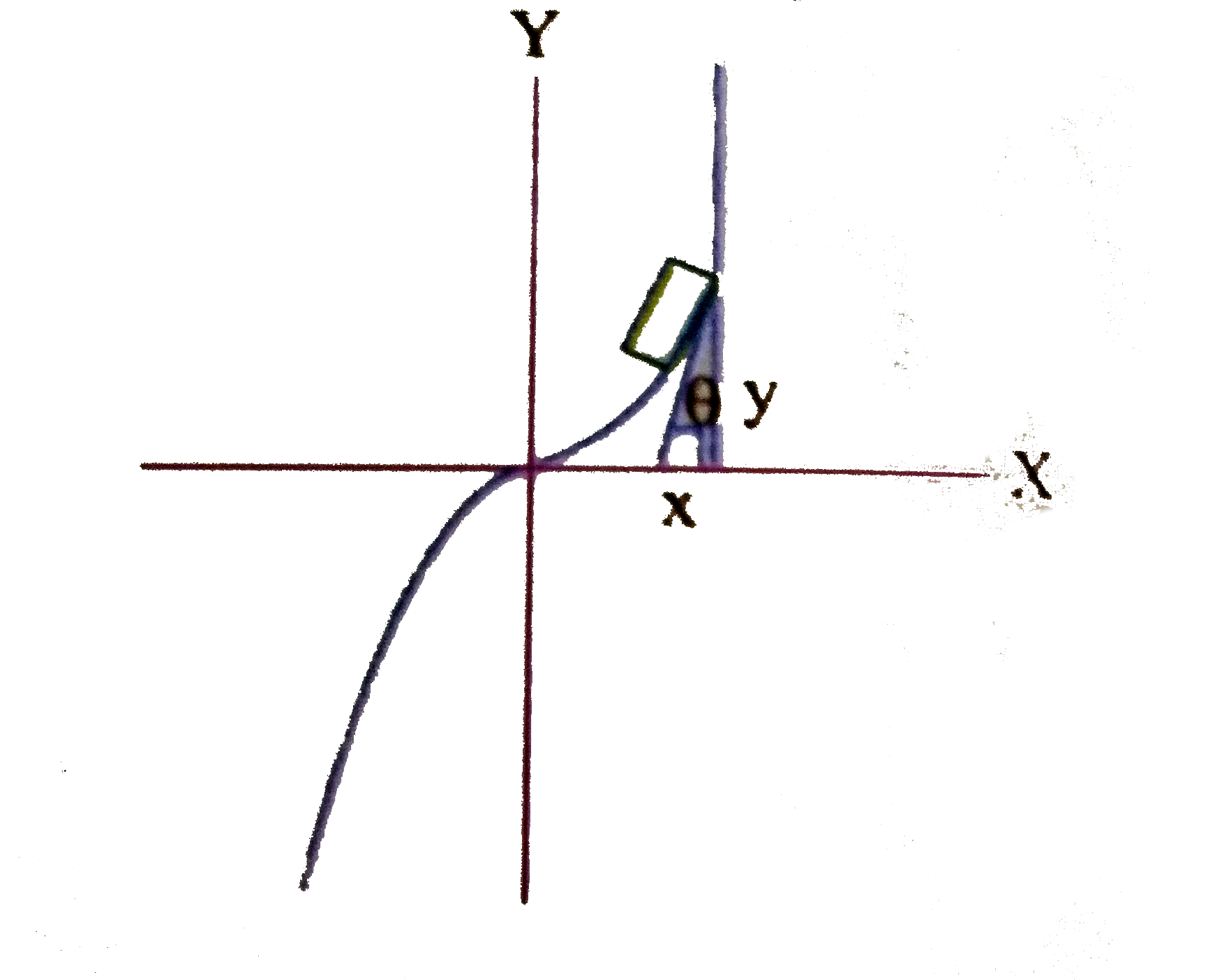 01:58View Solution
01:58View SolutionA body is moving down a long inclined plane of angle of inclination `'theta`' for which the coefficient of friction varies with distance x as `mu`(x) = kx , where k is a constant . Here x is the distance moved by the body down the plane . The net force on the body will be zero at a distance `x_(0)` is given by ..........
05:11View SolutionA body of mass 'm' slides down a smooth inclined plane having an inclination of `45^(@)` with the horizontal . It takes 2 s to reach the bottom . If the body is placed on a similar plane having coefficient of friction `0.5` , then what is the time taken for it to reach the bottom ?
06:16View SolutionTwo blocks of masses 4 kg and 2 kg are in contact with each other on an inclined plane of inclination `30^(@)` as shown in the figure . The coefficient of friction between 4 kg mass and the inclined plane is `0.3` , whereas between 2 kg mass and the plane is `0.2` . find the contact force between the blocks .
 08:11View Solution
08:11View SolutionA `30kg` box has to move up an inclined plane of slope `30^(@)` the horizontal with a unform velocity of `5 ms^(-1)`. If the frictional force retarding the motion is `150N`, the horizontal force required to move the box up is `(g =ms^(-2))` .
02:26View SolutionA body is sliding down an inclined plane having coefficient of friction 0.5. If the normal reaction is twice that of resultant downward force along the inclined plane, then find the angle between the inclined plane and the horizontal .
03:19View SolutionIn the given the wedge is acted upon by a constant horizontal force 'F'. The wedge is moving on a smooth horizontal surface A ball of mas 'm' is at rest relative to the wedge The ratio of forces exerted on 'm' by the wedge when 'F' is acting and 'F' is withdrawn assuming no friction between the edge and the ball is equal to .
04:26View SolutionA block of mass m kg is pushed up against a wall by a force P that makes an angle '`theta`' with the horizontal as shown in figure . The coefficient of static friction between the block and the wall is `mu` . Find the minimum value of P that allows the block to remain stationary .
03:50View SolutionA block of mass 1 kg lies on a horizontal surface in a truck. The coefficient of static friction between the block and the surface is 0.6. If the acceleration of the truck is `5m//s^2`, the frictional force acting on the block is…………newtons.
05:15View SolutionAssuming the length of a chain to be L and coefficient of static friction `mu`. Compute the maximum length of the chain which can be held outside a table without sliding.
02:32View SolutionIf the coefficient of friction between an insect and bowl is `mu` and the radius of the bowl is r, find the maximum height to which the insect can crawl in the bowl.
03:30View SolutionA block placed on a horizontal surface is being pushed by a force F making an angle `theta` with the vertical as shown in Fig. 7.39 . The coefficient of friction between block and surface is `mu` . (a) Find the force required to slide the block with uniform velocity on the floor . (b) Show that if `theta` is smaller than a certain

angle `theta_(0)` , the block cannot be made to slide across the floor , no matter how great the force be .08:27View SolutionA particle of mass m rests on a horizontal floor with which it has a coefficient of static friction `mu`. It is desired to make the body move by applying the minimum possible force F. Find the magnitude of F and the direction in which it has to be applied.
04:27View SolutionA cart weighing 200 N can roll without friction along a horizontal path . The cart carries a block weighing 20 N . The coefficient of friction between the block and the cart is `0.25` and g= `10 m//s^(2)` . Find the force of friction between the block and cart and their acceleration when a force of (a) 2N is applied to the block , (b) 20 N is applied to the block .
09:00View SolutionBlock A weighs `4 N` and block weigh `8 N` The coefficient of kinetic friction is `0.25` for all surface find the force `F` to slide `B` at a constant speed when (a)`A` rest on `B` and moves with it (b) `A` is held at rest and (c )`A and B` are connected by a light cord passing over a smooth putting as shown in fig 7.31 (a - c) restively.
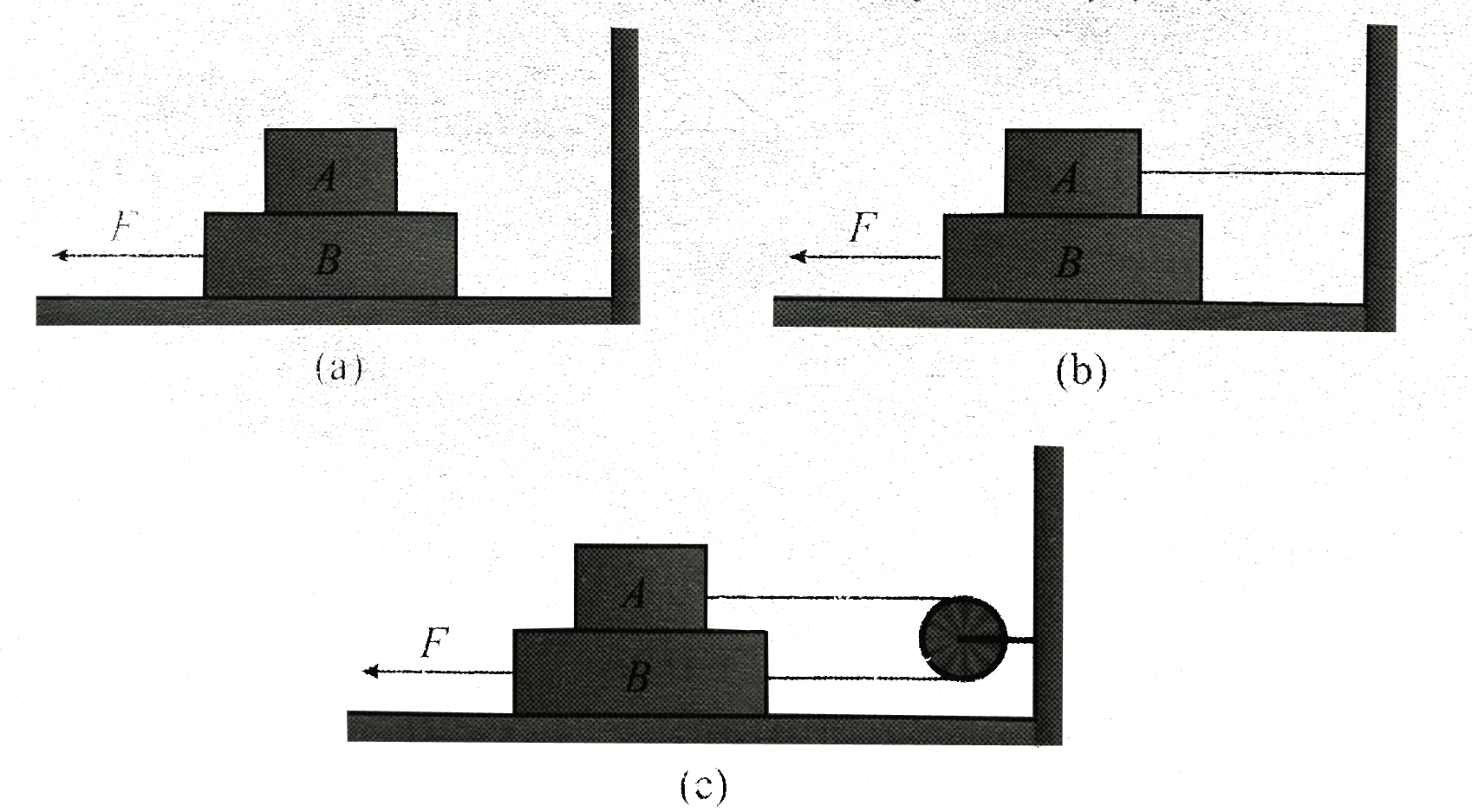 09:26View Solution
09:26View SolutionA block of mass 2 kg rests on an inclined plane which makes an angle of `30^(@)` with the horizontal. The coefficient of friction between the block and the surfcae is `sqrt(3//2)`. (i) What force should be applied on the block so that it moves down without any acceleration ? (ii) What force should be applied on the block so that it moves up without any acceleration ? (iii) Calculate the ratio of the powers in the above two cases if the block moves with uniform speed in both the cases.
06:57View SolutionA body of mass `5xx10^(-3)` kg is launched upon a rough inclined plane making an angle of `30^(@)` with the horizontal. Obtain the coefficient of friction between the body and the plane if the time of ascent is half of the time of descent.
14:54View SolutionA 60 kg block is pushed up on inclined plane by means of a horizontal push P as shwon in the figure . The coefficients of friction between the incline and block are `mu_(s) = 0.6` and `mu_(k) = 0.4` and the ramp makes an angle of `30^(@)` with the horizontal .
(a) What value of P is required to move the block at a constant speed of `0.20` m/s along the incline ?
(b) If the person should stop for rest and let P = 0 , does the block slide back on the incline ?09:54View SolutionA block of mass m is sliding on an inclined right angle through as shown in Fig. 7.46(a) and (b) If `mu` is the coefficient of kinetic friction , find the acceleration of the block .
View SolutionThe friction coefficient between the board and the floor shown in figure is `mu` Find the maximum force that the man can exert on the rope so that the board does not slip on the floor
 04:59View Solution
04:59View SolutionConsider the situation shwon in Fig. 7.49 . The horizontal surface below the bigger block is smooth . The coefficient of friction between the blocks is `mu` . Find the minimum and maximum accelerations with which the system should move in order to keep the smaller blocks at rest with respect to the bigger block .
 06:58View Solution
06:58View SolutionTwo blocks of mass `m` and `M`, are connect to the ends of a string passing over a pulley. `M` lies on the plane inclined at an angle `theta` with the horizontal and `m` is hanging vertically as shown in Fig. The coefficient of static friction between `M` and the incline is `mu_(s)`. Find the minimum and maximum value of `m` so that the system is at rest.
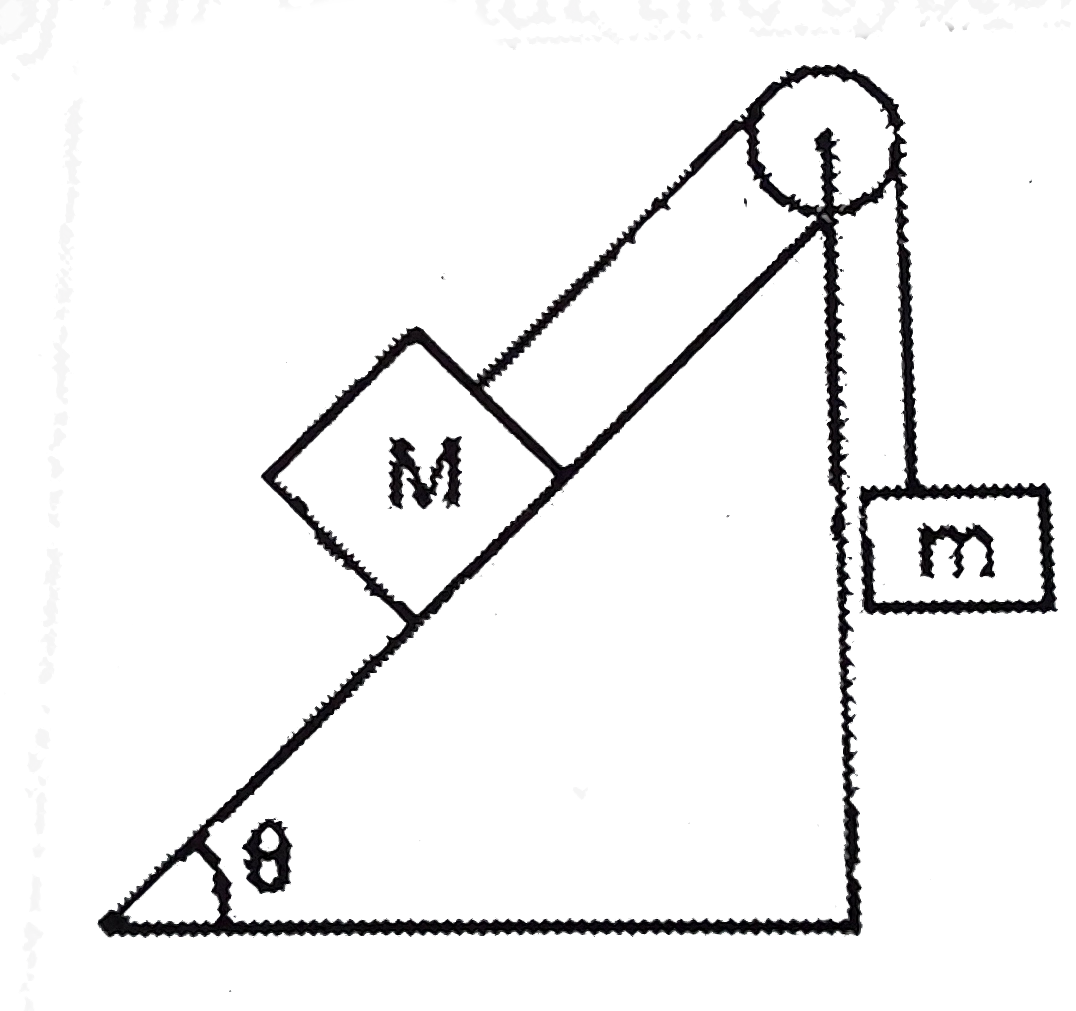 07:11View Solution
07:11View SolutionTwo blocks are kept an incline in contact with each other. Masses of blocks are `m_(1)` and `m_(2)` and coefficients of friction are `mu_(1)` and `mu_(2)` respectively. The angle of inclination is `theta`. Determine
(a) acceleration of blocks, and
(b) force `F` with which the blocks press against each other
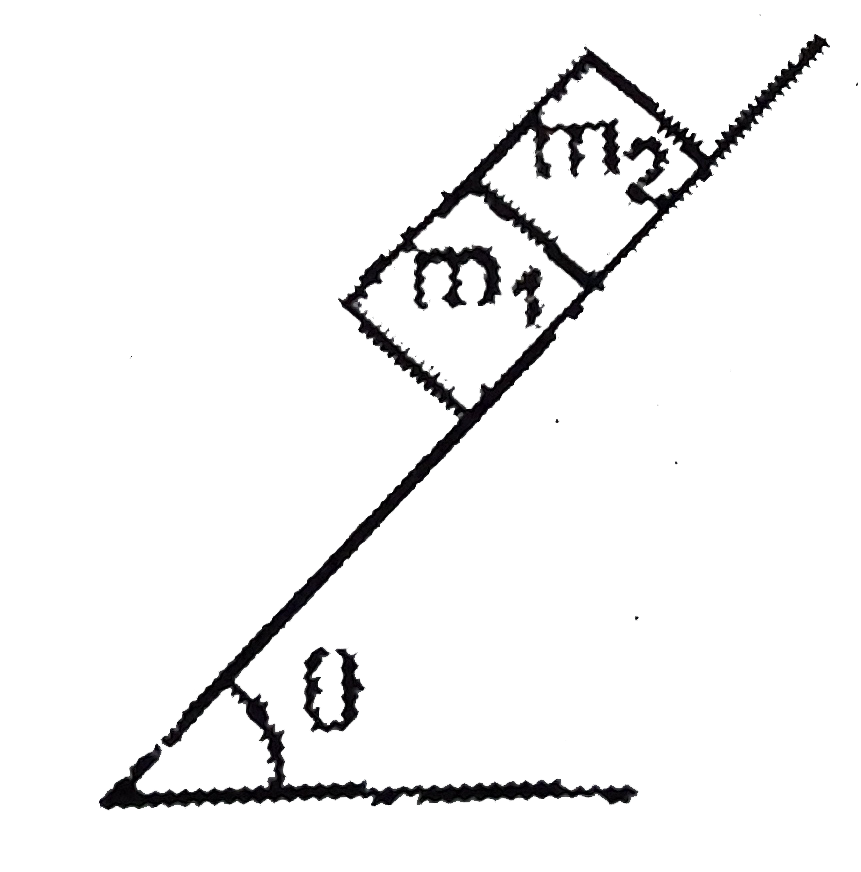 08:21View Solution
08:21View SolutionIn the figure , masses `m_(1) , m_(2)` and M are 20 kg , 5 kg and 50 kg respectively . The coefficient of friction between M and ground is zero . The coefficient of friction between `m_(1)` and M and that between `m_(2)` and ground is`0.4` . The pulleys and the string are massless . The string is perfectly horizontal between `P_(1)` and `m_(1)` and also between `P_(2)` and `m_(2)` . The string is perfectly vertical between `P_(1)` and `P_(2)` . An external horizonal force F is applied to the mass M . (Take g = `10 m //s^(2))`
(a) Draw a free body diagram for mass M , clearly showing all the forces .
(b) Let the magnitude of the force of friction between `m_(1)` and M be `f_(1)` and that between `m_(2)` and ground be `f_(2)` . For a particular F it is found that `f_(1) = 2f_(2)` . Find `f_(1)` and `f_(2)` . Write down equation of motion of all the masses . Find F , tension in the string and acceleration of the masses .
 08:21View Solution
08:21View SolutionTwo blocks of masses `m_(1)` = 3 kg and `m_(2) = (1)/(sqrt3)` kg are connected by a light inextensible string which passes over a smooth peg . The blocks rest on the inclined smooth planes of a wedge and the peg is fixed to the top of the wedge . The planes of the wedge supporting `m_(1)` and `m_(2)` are inclined at `30^(@)` and `60^(@)` respectively , with the horizontal. Calculate the acceleration of masses and the tension in the string .
06:48View SolutionA rod of length l and mass M is fixed to one end of a string . The string passes over a massless , frictionless pulley . A small ball of mass m `(lt M)` is attached to the other side of the string . The ball has an opening through which the string passes and the ball can slide along the string with some friction . Initially , the ball is held at level with the lower end of the rod . When set free , both the force of friction , if the ball rises to the level of the upper end of the rod in time t ?
 View Solution
View Solution(a) Find the maximum speed at which a car turn round a curve of 30 m radius on a level road if the coefficient of friction between the tyres and the road is `0.4` [ acc. Due to gravity = `10 m // s^(2)`]
(b) For traffic moving at 60 km/hr , if the radius of the curve is `0.1` km , what is the correct angle of banking of the road ? ( g = `10 m // s^(2))`04:28View SolutionA car is moving along a banked road laid out as a circle of radius r . (a) What should be the banking angle `theta` so that the car travelling at speed v needs no frictional force from tyres to negotiate the turn ? (b) The coefficient of friction between tyres and road are `mu_(s) = 0.9` and `mu_(k) = 0.8` . At what maximum speed can a car enter the curve without sliding toward the top edge of the banked turn ?
 04:20View Solution
04:20View SolutionA car of mass m travelling at speed v moves on a horizontal track so that the centre of mass describes a circle of radius r . Show that the limiting speed beyond which the car will overturn is given by
`v^(2) = ("gra")/(h)`
where 2a is the separation of the inner and outer wheels and h is the height of the centre of mass above the ground .View SolutionA tube of length L is filled completely with an incompressible liquid of mass M and closed at both ends . The tube is then rotated in a horizontal plane about one of its end with a uniform angular velocity `omega` . Find the force exerted by the liquid at the other end .
03:35View SolutionA string of length 1m is fixed at one end and carries a mass of 1 kg at the other end. The string makes `2//pi` revolutions per second around a vertical axis passing through the fixed end. Calculate (i) angle of inclination of the string with the vertical, (ii) the tension in the strong and (iii) the linear velocity of the mass.
05:03View SolutionWater of density `p` flows with a linear speed `v` through a horizontal rubber tube having the form of a ring of radius `R`. If the diameter of the tube is `d(ltlt R)`, find the tension in the rubber tube.
03:58View SolutionA hemispherical bowl of radius R=0.1 m is rotating about its own axis (which is vertical) with an angular velocity `omega` A particle of mass 0.01 kg on the friction less inner surface of the bowl is also rotating with same `omega` The particle is at a height h from the bottom of the bowl.
(a) Obtain the relation between h and `omega` What is the minimum value of `omega` needed in order to have a non zero value of h ?
(b) It is desired to measure g using this set up, by measuring h accurately. Assuming that r and `omega` are known precisely, and that the least count in the measurement of h is `10^(-4)` m. What is the minimum possible error `Deltag` in the measured value of g ? `g = 9.8 m//s^(2)`04:13View SolutionThree particles, each of the mass `m` are situated at the vertices of an equilateral triangle of side `a`. The only forces acting on the particles are their mutual gravitational forces. It is desired that each particle moves in a circle while maintaining the original mutual separation `a`. Find the initial velocity that should be given to each particle and also the time period of the circular motion. `(F=(Gm_(1)m_(2))/(r^(2)))`
04:01View SolutionA liquid is kept in a cylindrical vessel which is rotated along its axis. The liquid rises at the sides, if the radius of vessel is ` 0.05 m` and the speed of rotation is `2 rev//s`, find difference in the height of the liquid at the centre of the vessel and its sides.
02:13View SolutionA small block starts sliding down an inclined plane subtending an angle `theta` with the horizontal . The coefficient of friction between the block and plane depends on the distance covered from rest along the plane as `mu = mu_(0)x` where `mu_(0)` is a constant . Find (a) the distance covered by the block down the plane till it stops sliding and (b) its maximum velocity during this journey .
03:33View SolutionA uniform cylinder of height `h` and radius `r` is placed with its circular face on a rough inclined plane and the inclination of the plane to the horizontal is gradually increased. If `mu` is the coefficient of friction, then under what condition the cylinder will (a) slide before toppling (b) topple before sliding.
07:32View SolutionBlock `A` of mass `m` and block `B` of mass `2m` are placed on a fixed triangular wedge by means of a light and inextensible string and a frictionless pulley as shown in fig . The wedge is inclined at `45^(@)` to the horizontal on both sides . The coefficient of friction between the block `A`and the wedge is `2//3` and that between the block `B` and the wedge is `1//3` .If the system of `A and B` is released from rest then find .
a. the acceleration of `A`
b. tension in the string
c.the magnitude and direction of the frictional force acting on `A`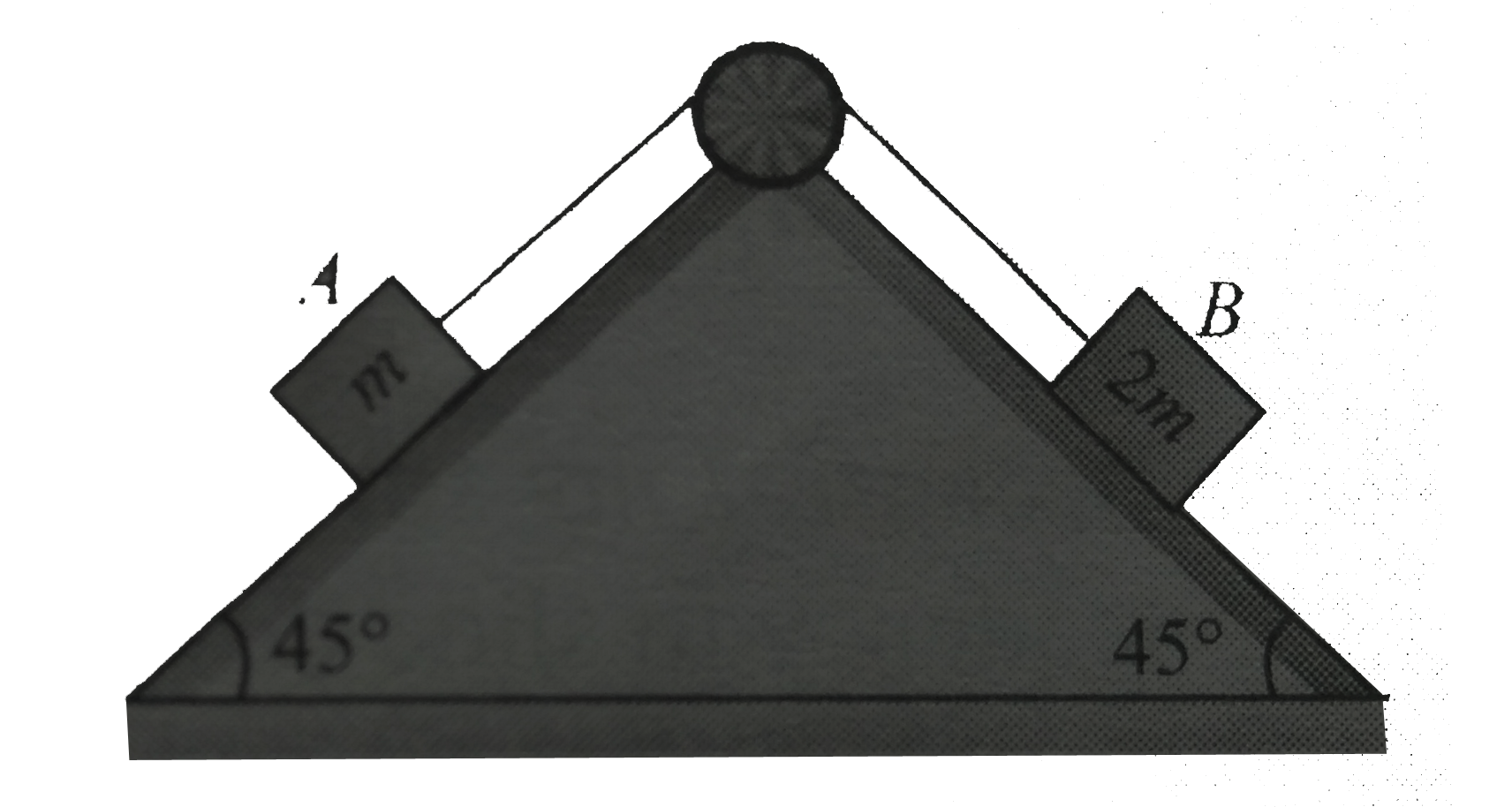 12:06View Solution
12:06View SolutionA particle is at rest on a rough horizontal plane . The plane is slowly titled until the particle starts to move and is then kept fixed . If the static and kinetic coefficients of friction are `mu_(s)` and `mu_(k) ( lt mu_(s))` respectively , show that the velocity of the particle after it has travelled distance d is given by :
`v = sqrt((2(mu_(s) - mu_(k))"gd")/((1 + mu_(s)^(2))^(1//2)))`07:27View Solution
Problem questions and complete solutions for chapter FRICTION AND CIRCULAR MOTION of GR BATHLA & SONS PHYSICS (HINGLISH) of Class 11
